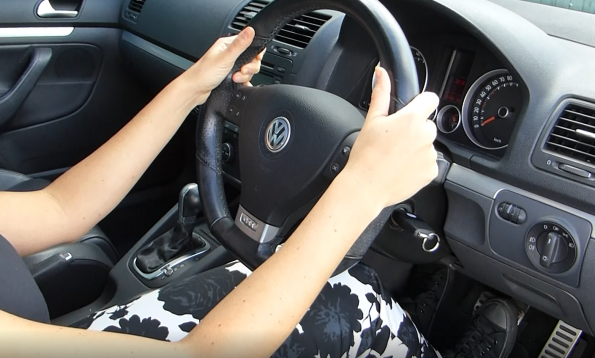
Preferred hand position when driving
There are two main hand positions for driving:
- Driving forwards: Hands at the quarter-to-three position, as shown above.
- Driving backwards: Right hand on the top of the steering wheel and left hand at 8 o’clock to allow you to turn your body to look out of the back window.
These give you the best control in the circumstances. If your shoulders are tired, then you can drop your hands to the 4:40 position (right hand at 4 o’clock and left hand at 8 o’clock), but this doesn’t give as much control.
Hand motion when turning
For shallow turns with less than 45 degrees of turn, keep both hands on the wheel and rotate it.
For a medium to sharp turns to the right at more than 20km/h, use the hand-to-hand method: move your left hand to the bottom of the steering wheel to meet the right hand as it pulls the steering wheel down. Holding the steering wheel, move your left hand to the top, meanwhile taking your right hand off the wheel to move it to the top to meet your left hand and repeat as necessary. Do the opposite to unwind the steering and to turn to the left.
For medium to sharp turns when travelling at less than 20km/h it’s perfectly fine to cross your hands.
Why can you cross your hands when turning while doing less than 20km/h?
Crossing your hands is inherently slightly inefficient, but in some circumstances can be a little bit quicker than hand-to-hand. The reason it’s OK to use at under 20km/h is because your airbag will not deploy. Airbags usually deploy at 25km/h or more. If you were crossing your hands and hit something, the airbag would hit your arm. If the impact of the airbag on your arm didn’t break your arm, your arm hitting your face almost certainly will…possibly along with your nose.
